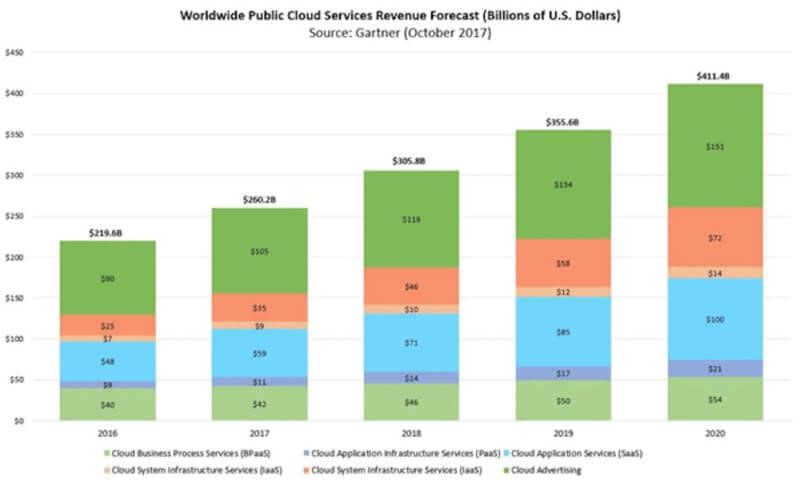

August 24, 2023
Cloud computing is the contemporary term for the commercialization of these innovations, in which computing is offered as a utility on a pay-as-you-go basis.
With the expansion of the world of the web over the last several decades, there has been an alarming increase in the utilization of data and information, which includes thousands of simultaneous e-commerce operations and millions of Webs requests every day. This ever-increasing demand is met by large-scale data centers, which house thousands of computers as well as other equipment such as software, storage, and network systems. Many internet giants, like Google, Amazon, eBay operate massive cloud networks all over the world. Custom web application development services are being provided keeping in view the demand factor, globally, as more and more buyers are entering the tech arena.
Cloud computing is the contemporary term for the commercialization of these innovations, in which computing is offered as a utility on a pay-as-you-go basis. Historically, commercial organizations invested a significant amount of cash and time in the acquisition and upkeep of computer resources. The development of Cloud computing is gradually transforming this ownership-based model into a subscription-based approach by giving on-demand access to scalable infrastructure and services. The Cloud allows users to store, access, and share any quantity of data.
The new trends of tech hubs i.e. cloud computing and green computing have become extremely advantageous to one another. The modern-day tech network largely relies upon this new technology. These powerful computer gradients are both crucial to technological advancement and transformation. Cloud computing is a network grid in which information and telecommunication technologies play an important role in the total abstraction of information. Green computing, on the other hand, is just the repurposing of information technology goods. Recycling might be an important aspect of green computing. Cloud computing and virtualization are crucial parts of green computing approaches that use fewer computers, resources, and rely on decreased power consumption.

A few of the reasons why more and more people are adopting cloud computing every day include the fact that it is cost-effective, especially for organizations, because there is no need for them to acquire new equipment, software, or get involved in licensing. They may save anything on the cloud and then proceed to work on their ideas. Program management may also be done efficiently by a team that is not all in the same location anywhere in the world. Every Cloud Based Application Development Company is keen to assist modern consumers by adding value to the IT industry.
Every sector is attempting to incorporate eco-friendly techniques into its operations in response to growing energy use. Cloud computing has been a pleasant development for many IT organizations. As it also benefited the environment by reducing energy use in data centers. Also, this tech eliminates the necessity for separate data centers or storage spaces. Cloud computing has been successful in eliminating chances of data breaches by securing all information in one place.
In addition, cloud computing is a more environmentally responsible solution. More and more firms are concentrating on decreasing their carbon footprint to develop a long-term strategy for environmentally friendly growth. Furthermore, servers are housed in climate-controlled rooms with carefully managed temperature and humidity levels. And cloud providers can adopt high-density efficiency designs that are difficult for in-house centers to reproduce. Nascent companies, where cost is a big consideration, are more inclined to forego energy-saving technology in favor of a less expensive option. The cloud solves this problem by giving the same equipment to all businesses.

Research conducted by Microsoft suggests that shifting business applications to the cloud may reduce per-user carbon footprint by 30% for large. Already-efficient enterprises and by up to 90% for the smallest and least productive firms.
Even though information technology and the environment are researched separately. The growing influence of information technology on the environment is not taken into account. Cloud computing can save billions of dollars while reducing emissions by millions of metric tonnes. If it is located in places that imply renewable energy resources. While the desire for computers cannot be halted. Firms must devise methods of delivering technological goods in a more intelligent and environmentally responsible manner.
The shifting circumstances of the industrial revolution are analogous to the ever-changing technical achievements of information systems cloud computing. The concept of green cloud computing signals the evolution of well-built, low-cost tech tools.
The Green Cloud Architecture framework can help save up to 27% energy resources. The need for resources in a data center to serve several applications. It makes it challenging to offer adequate resources and allocate them to a variety of tasks. Therefore, eco-friendly cloud computing is the go-to option as it saves costs and brings less harm to the surroundings. With the increasing demand for tech goods that are cost-efficient and easy to operate. There has been an increase in firms applying this trendy technology. Moreover, the Cloud Computing Architecture Company USA is finding ways to curb the needs of modern buyers by developing computing tools that are best suited to the environment as well.